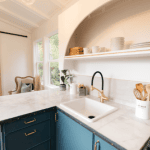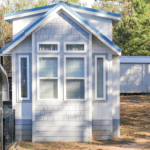
Living small doesn’t mean you have to compromise on efficiency, luxury, or sustainability. As the tiny house movement grows, many are looking for ways to maximize their eco-friendly living. Solar power emerges as a top solution, allowing you to power your home naturally and reduce your carbon footprint. This comprehensive guide dives into the fascinating world of solar power in tiny houses, showcasing the benefits, considerations, and steps to make your tiny abode a beacon of green energy.
The Merits of Solar Power in Tiny Houses
- Eco-Friendly: Solar energy is clean and renewable. By harnessing the sun’s power, you contribute to reducing greenhouse gas emissions and decrease reliance on fossil fuels.
- Cost-Efficient: After the initial installation costs, solar panels can lead to significant savings. In areas with high electricity costs or with great solar incentives, the payback period can be surprisingly short.
- Energy Independence: Relying on solar power minimizes your dependence on the grid. This means fewer power outages and increased control over your energy source.
Solar Power Systems: Types & Components
- Solar Panels: These are the primary units that capture sunlight and convert it into electricity. For tiny houses, there are a variety of compact and lightweight options available.
- Inverter: Converts the direct current (DC) produced by the solar panels into alternating current (AC) used in homes.
- Batteries: If you’re off-grid or want backup power, batteries store excess solar energy for later use. There are several types, including lithium-ion and lead-acid, each with its pros and cons.
- Charge Controller: This device ensures that the batteries charge efficiently and safely, protecting them from overcharging.
How to Size Your Solar System for a Tiny House
Sizing your solar system appropriately is crucial to ensure you have enough power without overspending on unnecessary capacity.
- List All Electrical Devices: Note the wattage and average daily usage hours of each.
- Calculate Total Consumption: Multiply the wattage by usage hours to get the daily energy consumption for each device. Sum them up for total daily usage.
- Factor in Sunlight Hours: Consider your geographical location and average sunlight hours. This will determine how long your panels will generate power each day.
- Choose Panels & Batteries: With total consumption and sunlight hours in mind, select appropriate panels and storage capacity.

Installation & Placement Considerations
- Roof Space: A tiny house might have limited roof space, so it’s essential to choose efficient panels. Some tiny homeowners even use ground-mounted panels or portable solar setups.
- Orientation: For optimal sunlight exposure, panels should typically face south in the Northern Hemisphere and north in the Southern Hemisphere.
- Tilt Angle: Adjust the tilt angle of the panels depending on the season to maximize sunlight capture.
- Shading: Ensure no objects (trees, other structures) cast shadows on the panels, reducing their efficiency.
The Financial Benefits of Solar Power in Tiny Houses
- Incentives and Tax Breaks: Many governments and states offer incentives for installing solar panels. Tax credits, rebates, and solar grants can significantly reduce initial costs. Always check local and federal opportunities before investing.
- Reduced Utility Bills: Harnessing the sun’s energy means a reduction in monthly utility bills. Over the lifespan of the panels, you could save thousands, making the tiny house living even more economical.
- Increased Property Value: A tiny house with an efficient solar power system can fetch a higher resale value. Eco-friendly features are becoming increasingly desirable in real estate markets.
Challenges and Solutions
- Space Constraints: The compact nature of tiny houses means that you may not have ample roof space for a full-sized solar system. Solution? Opt for high-efficiency panels or consider ground-mounted systems or solar trackers that follow the sun’s movement.
- Mobility Issues: If you plan to move your tiny house frequently, setting up and breaking down a solar system can be cumbersome. Portable solar panel kits can be an alternative, offering plug-and-play solutions that are easy to set up and move.
- Cost Barriers: While prices have decreased significantly over the years, the initial setup can still be substantial. Considering solar financing options or leasing programs might be beneficial. Some providers even offer “pay-as-you-go” solar, requiring little to no upfront costs.

Safety and Regulations
- Safety Precautions: Ensure all electrical connections are secure. Using a qualified professional for installation can help avoid any potential risks.
- Building Codes & Permissions: Before installing, always check local building codes, HOA rules, and permit requirements. Some areas may have restrictions or specific guidelines regarding solar installations.
Conclusion
Embracing solar power in a tiny house is more than a trend; it’s a sustainable choice for the future. This guide provides a glimpse into the world of solar-powered tiny living, but the journey is uniquely individual. As you consider going solar, remember that it’s not just about living small, but also living smart. With the sun as your ally, your tiny house can stand tall as a testament to eco-friendly innovation and forward-thinking living.






